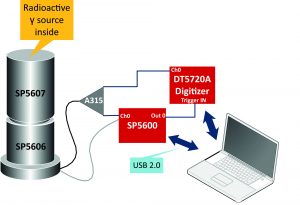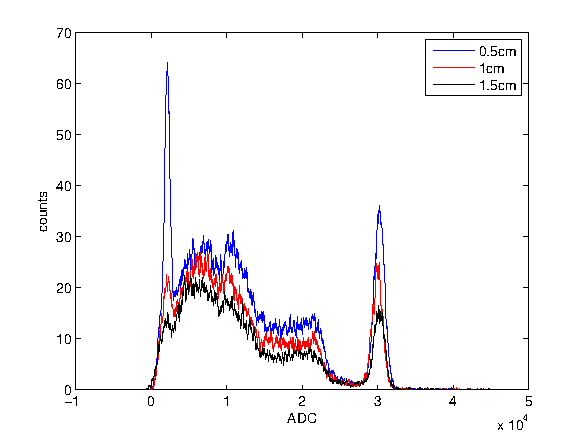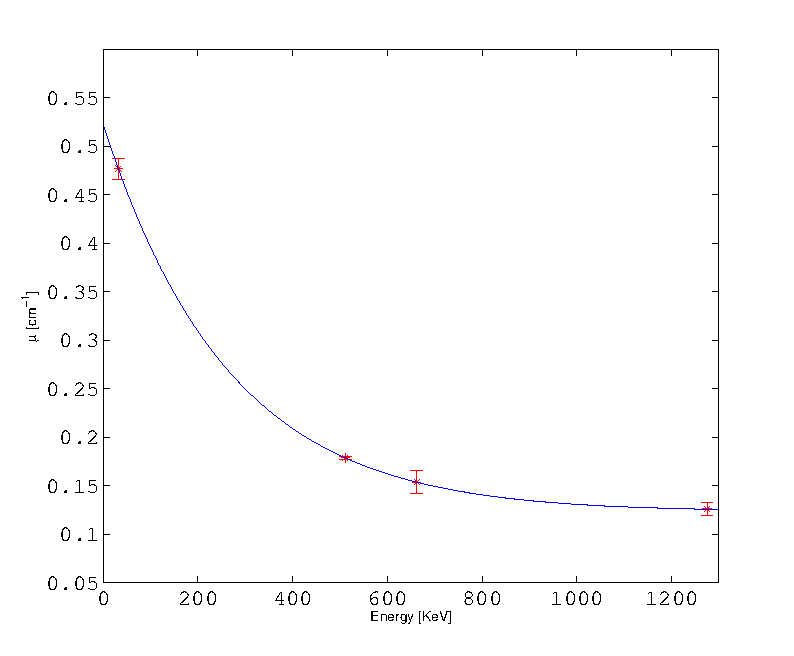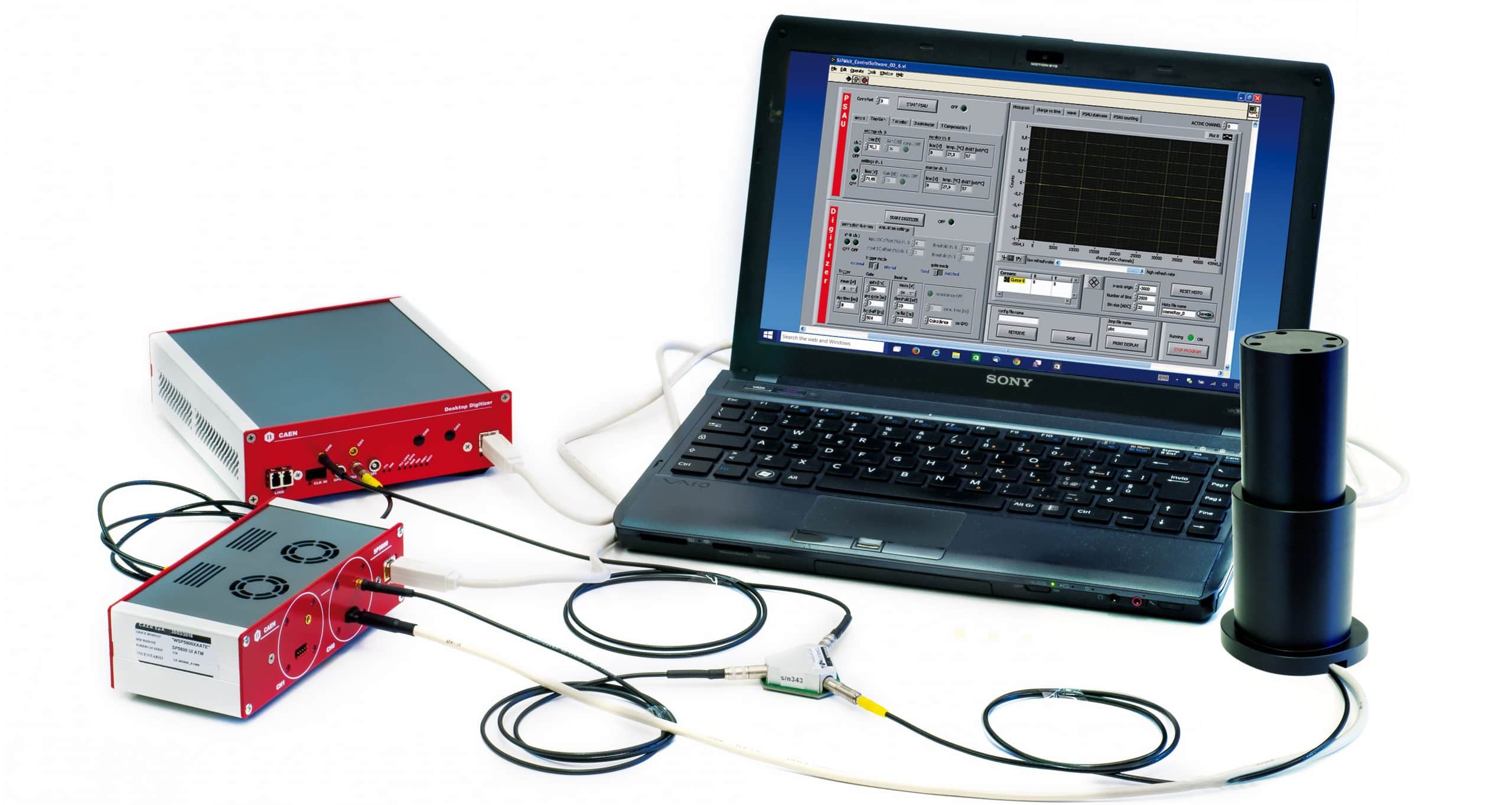| Difficult | Execution Time | Data Analysis | Radioactive Sources |
|---|---|---|---|
| No | Yes |
Hardware setup
This experiment guide is referred to the SP5600C/AN educational kit. If you don’t have this kit, choose your own from the following list to visualize the related experiment guide:
Equipment
- SP5600C/AN – Educational Gamma Kit
- Additional Gamma Radioactive Source

Purpose of the experiment
The main goal of the experiment is the measurement of the γ radiation attenuation coefficient for different materials and different energies.
Fundamentals
The attenuation of a γ radiation flux passing through matter is described by the exponential law:
I(x) = I0 * e–μx
where I0 is the incident photon flux and I(x) measures the flux of γ rays emerging from a layer x of material without having interacted. The coefficient μ depends on the material properties (atomic number, density) and on the energy of the impinging photon. The student is guided towards the development of complementary measurement techniques based on counting and on the analysis of the spectrum, performing the experiment for different materials (including PMMA, a water equivalent solid state organic material used in medical dosimetry).
Carrying out the experiment
The scintillator crystal shall be coupled to the SiPM in the SP5607, through a thin layer of index matching grease to maximize the light collection. In order to avoid saturation, the output of the SiPM is divided using the A315 splitter: one branch is connected to the DT5720A and will be digitized. The other branch will be amplified by the SP5600 module, generating the trigger for the integration signal by the on-board leading edge discriminator. The discriminator threshold shall be defined looking at the spectrum and evaluating the dark count rate. Once this is set the SP5609 absorption tool shall be mounted. The experiment can be performed for every absorber thickness in counting mode and analysing the spectrum, measuring the events in the photo-peak for a constant predefined time interval.

Experimental setup block diagram
Results
Exemplary results are shown below, reporting the variation of the events in the photopeak for different absorber thickness, a plot verifying the exponential absorption law and the dependence of the absorption coefficient on the energy.

Gamma spectra acquired with different absorber thicknesses

Linear dependence of logarityhmic intesity of gamma ray as a function of penetration thickness

Gamma attenuation coefficient as a function of energy


